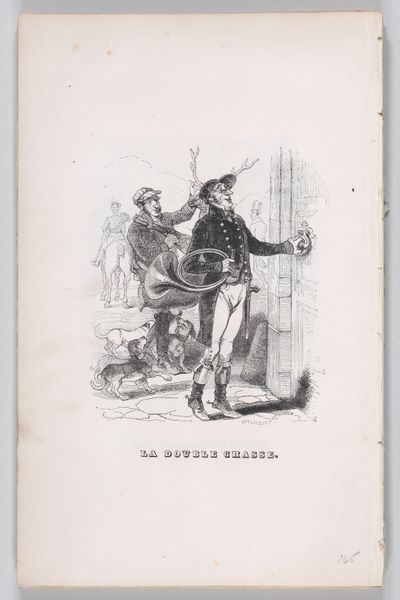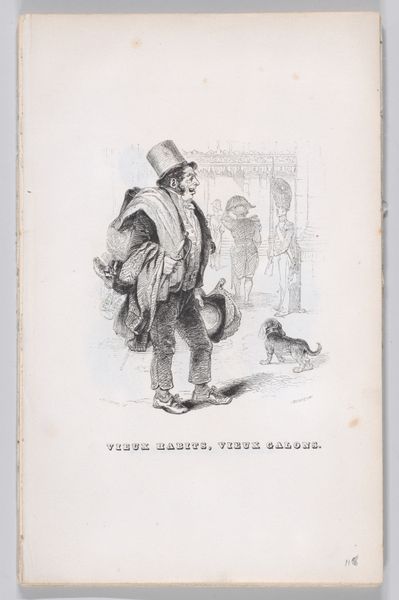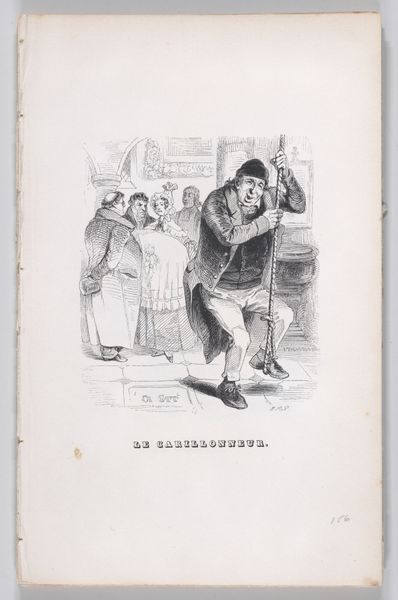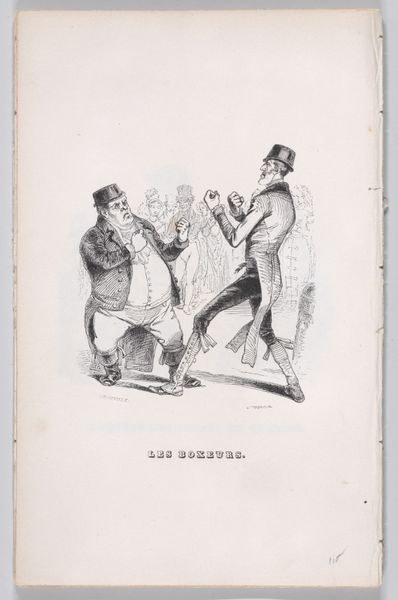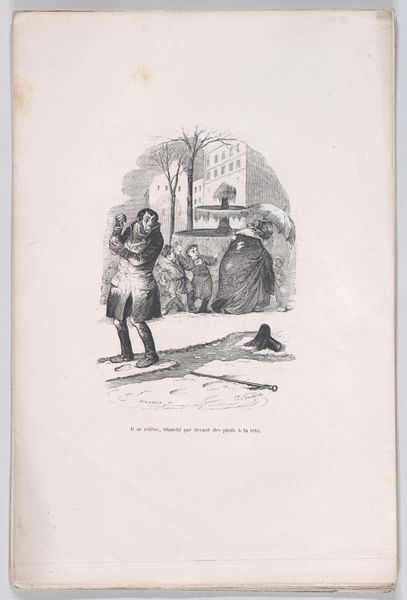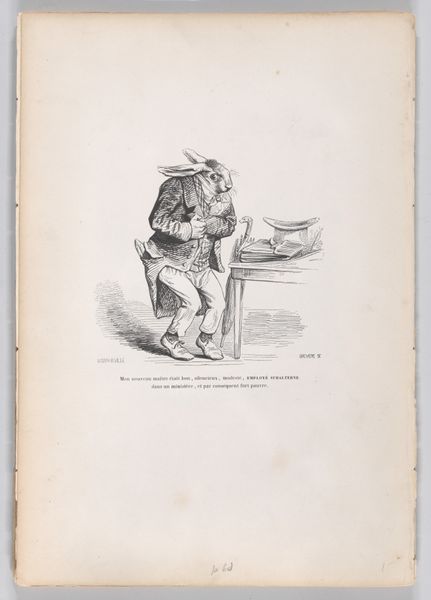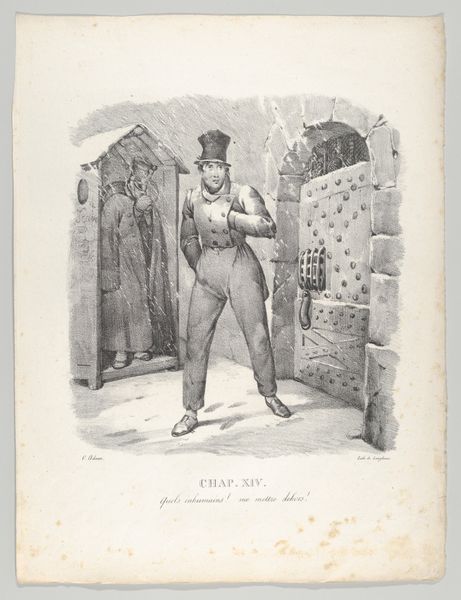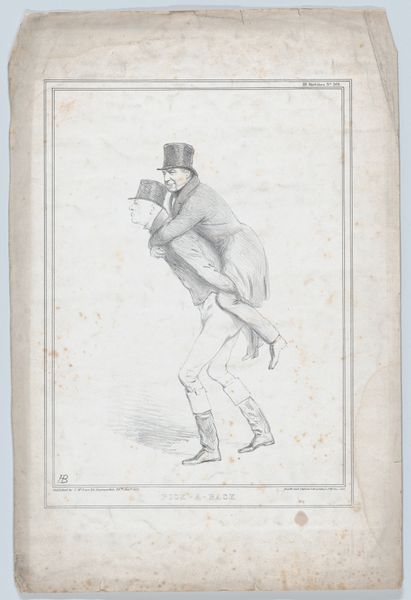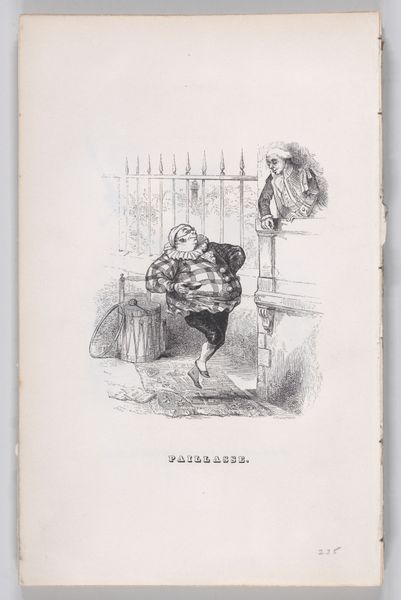
"The Wandering Jew" from The Complete Works of Béranger 1836
0:00
0:00
drawing, print
#
pencil drawn
#
drawing
#
light pencil work
# print
#
pencil sketch
#
personal sketchbook
#
coloured pencil
#
ink colored
#
sketchbook drawing
#
watercolour illustration
#
sketchbook art
#
watercolor
Dimensions: Sheet: 8 5/8 × 5 1/2 in. (21.9 × 14 cm)
Copyright: Public Domain
Curator: Welcome. We are standing before a lithograph dating back to 1836. It's entitled "The Wandering Jew" and originates from "The Complete Works of Béranger." The artist behind this piece is J.J. Grandville. Editor: Right away, there’s something hauntingly evocative in the figure’s determined stride, yet the face hints at immeasurable sorrow. It's as if time itself is etched into the deep lines around his eyes. Curator: Grandville’s illustrative choices here are fascinating. Note how the linear quality of the etching lends itself to both detail and symbolic weight. The character’s exaggerated features—his flowing beard, weathered clothing, the staff he leans upon—become signifiers in this narrative. Editor: Indeed, his clothes and bare feet seem to convey an alienation. He stands in stark contrast to the other villagers peering and pointing at him from a distance. This portrayal evokes feelings of rejection, displacement, perhaps even judgment from the other figures depicted. I can almost sense his perpetual solitude, despite being surrounded by others. Curator: Precisely, and this speaks volumes. Consider the visual rhetoric: the staff and the village are elements within Grandville's graphic vocabulary to connote weariness and a lack of rest. These are crucial to our understanding of this cultural icon. Editor: Is it the lighting trick, or is there is a dream-like unreality to the buildings behind? Something almost mirage-like that tells you he will never truly return home. And perhaps there is a parallel between his endless journey and humanity’s eternal quest for meaning? Curator: That is a pertinent reading given Grandville’s mastery of visual codes—elements which provide meaning well beyond the merely representational, tapping into historical memory and emotion. It reminds us that art objects aren't mirrors, but critical lenses that reveal the complexities of social life. Editor: Absolutely. Even after knowing it's an etching, it breathes with such a sorrowful, lonely air... Curator: The resonance between technical execution and emotive thematics is what allows a relatively small piece to reverberate far beyond its dimensions. Editor: Ultimately, it’s a testament to Grandville's vision that an image printed nearly two centuries ago can still provoke such poignant reflections today.
Comments
No comments
Be the first to comment and join the conversation on the ultimate creative platform.
